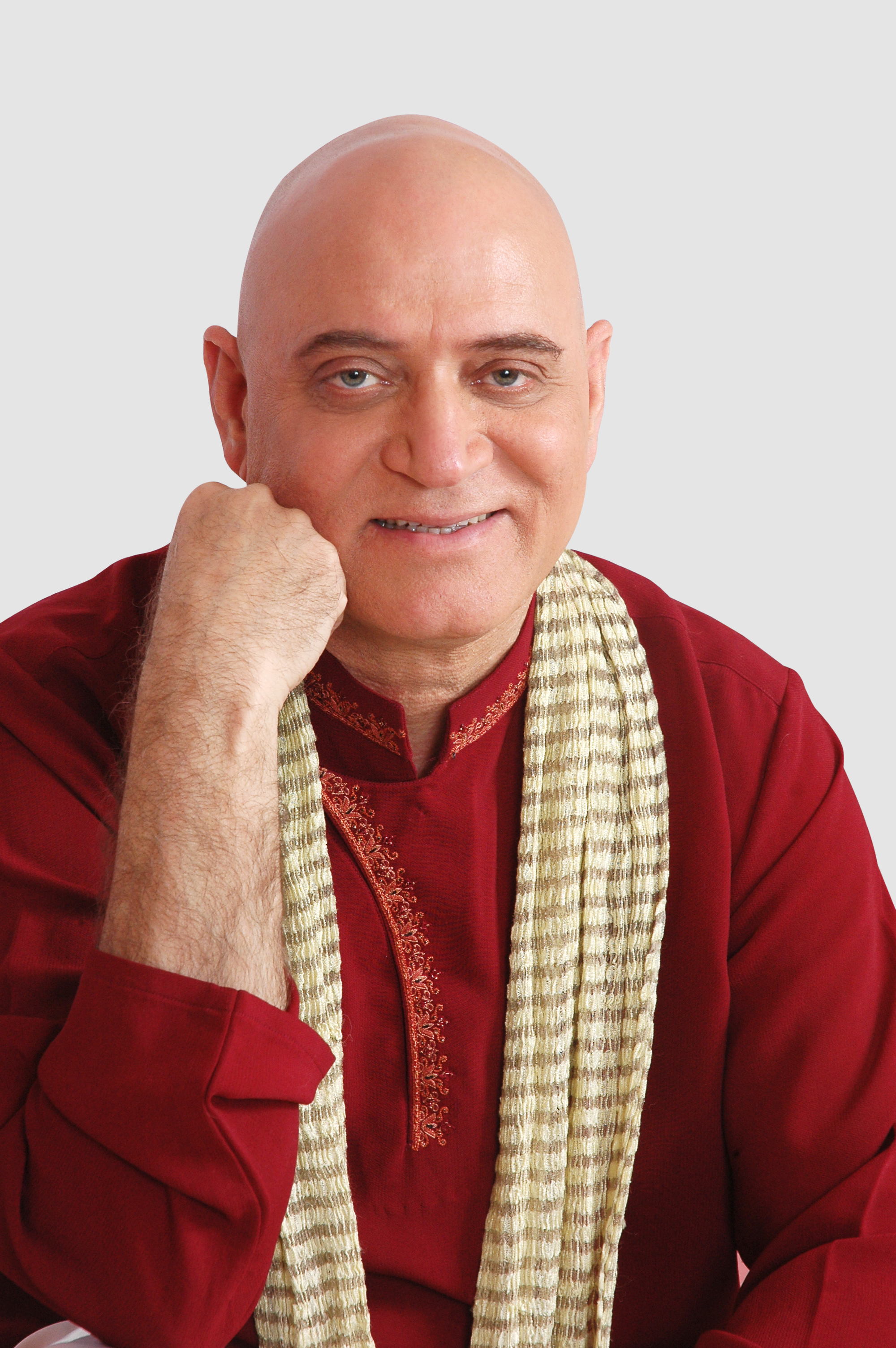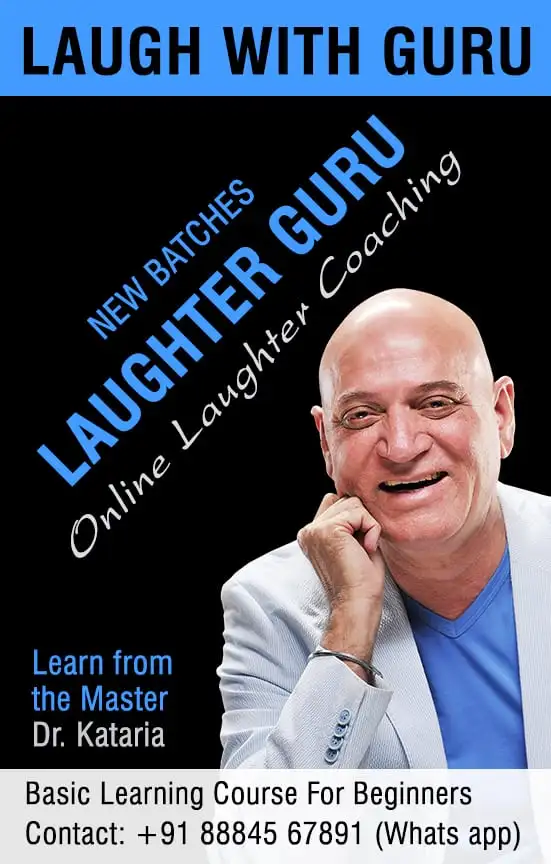
When I was in Berlin on 14th October 2006 for the European Laughter Yoga Conference, a newspaper journalist asked me how you can laugh if you are not in a mood to laugh?
I am asked this question often by people all over the world. Here is the answer
When I was in Berlin on 14th October 2006 for the European Laughter Yoga Conference, a newspaper journalist asked me how you can laugh if you are not in a mood to laugh?
I am asked this question often by people all over the world. Here is the answer.
I have observed in laughter yoga sessions around the world that at the start of the session people are often, for a host of different reasons, not in the mood to laugh. I have also observed that even if they start the session by forcibly doing the laughter yoga exercises for a few minutes, they soon swing into a good mood and real laughter begins to flow.
Linda Leclerc, a LY teacher from Canada, told me about a woman who attended one of her laughter yoga sessions. She arrived complaining of a terrible headache and was feeling very low and tired. After a few laughter yoga exercises her headache disappeared and she was energized.
When you say ‘I don’t feel like laughing’ this means that mentally you’re not in a good mood and your body feels is tired and listless. This is mind-body influence.
Laughter yoga exercises are a body phenomena. Because of the connection between mind and body, once you initiate laughter exercise from the body, changes occur in the mind: your mood improves and you’re ready to laugh. Laughter Yoga is a body-mind therapy in which we make a commitment to create good feelings in body and mind through conscious choice and the performing of physical exercises that are designed to trigger specific reactions in the mind.
This is entirely an internal process and does not depend upon external conditions.
Laughter yoga is based on the scientific fact that even if you laugh for no reason, you body can not tell the difference between between real laughter and self induced laughter. Let me explain.
Even if you don’t feel like laughing and you fake or simulate laughter, messages are sent through the body-mind connection that cause your brain cells to produce special chemicals called endorphins, also known as the ‘happy chemical’. Endorphins cause relaxation and good mood through positive physiological and biochemical changes.
Endorphins are only one of a cocktail of chemicals that are produced as a result of laughter yoga exercises. Other chemicals have profound positive effects on your body in different ways, but today I’m talking about mood and emotions. We’ll talk about laughter yoga’s ‘happy cocktail’ another day.
MOTION CREATES EMOTION
Let me introduce the theory of motion creates emotion, which is about the link between our body and mind.
Have you observed sad people? Very often you can tell someone is sad just by reading their body language. They walk slowly, talk slowly and their body movements become slow. They sit in a particular posture, often with their head sloping down. This shows that whatever happens to your mind happens to your body.
The reverse is also true. I’m sure you can visualize happy body language that leaves you no doubt that a person is happy and full of energy.
There is a powerful two-way link between the body and mind. Whatever, happens to your body happens to your mind. I remember as a child my father telling me ‘if you are sad don’t sit idle — stay active. If you do some work you will feel better’. And yes I did feel better. If you keep your body active and moving your mind will experience happy emotions. This is the theory of motion creates emotion. In laughter yoga we learn to exercise the body in ways that will have a strong positive effect on the mind.
Psychologist William James found in 1884 that a person’s mental state of mind whether positive or negative leads to a corresponding body behavior. Each emotion in the mind has a corresponding expression in the body.
William James also found that the bodily expression of any emotion creates the corresponding emotion in the mind. In other words enacting a behavior associated with a state of mind will cause similar changes in the mind as are caused by that particular emotion.
Let’s look at some examples of this phenomenon.
Sexual thoughts in the mind lead to the arousal of sex organs in the body. Equally, accidental or unexpected stimulation of the sex organs will often lead to sexual arousal in the mind. Try the following exercise: sit in a ‘moping’ posture as if you are depressed and reply to every question in a dismal voice. You will soon experience a feeling of sadness in your mind.
Actors often use the bodily expression of emotions to create different emotions they need in a role. I have discussed this with many film and theater actors and actresses in Bollywood. They tell me that this technique is so powerful that the emotions generated this way can be hard to stop and sometimes continue into their private life. They relate that when performing tragic roles the sadness carries often over into their real-life and can be hard to shake off.
My friend Dr Dale Anderson from Minnesota USA told me about an American actress who acted a role with great sadness for some time and actually went into depression with strong mental and physical symptoms. When checked medically all her bodily functions were normal and they could find no physical reason for her depression. The doctors advised her to stop doing tragic roles. As soon as she started acting in comic roles all her symptoms disappeared.
Athletes in competitive sports use this phenomenon in their preparation for important tournaments. They act out courageous behavior and express positive emotions by shouting and making body gestures to put their mind in a positive state. This technique removes fear from the mind and reduces anxiety.
Similar tactics are used by soldiers in battle. Shouting at the top of their voice when attacking boosts their mental confidence and also intimidates the enemy. The bodily expression of acting courageously creates similar emotions in the mind.
By understanding this two-way connection between the body and mind you understand how laughter yoga body exercises can within just minutes enable real joyous laughter in people by changing their state of mind from ‘not in the mood to laugh’ to ‘happy and joyful, lets laugh!’

